1903 no event
- Hits: 35
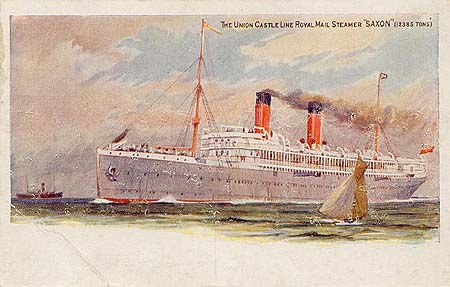
With the Boer War still affecting lives, the third South African championships were once again hosted by the Eastern Province ASA. No images of the facilities used in these early galas have yet been located.
Click here to read more about these early days of swimming in South Africa.
| 100 yds Championships | ||||
| Heat 1 | ||||
| Goldrick, W | Marist Brothers, Uitenhage | |||
| Hertbert, F | ||||
| Wrensch, Harry | ||||
| Heat 2 | ||||
| Wearin, E | WP | |||
| Cornwell, William | WP | |||
| Mark, AE | ||||
| Reeves, C | ||||
| Heat 3 | ||||
| Marais, RF | WP | |||
| Porter, H | WP | |||
| Carswell, Robert | EP | |||
| MacEwan, E | ||||
| Final | ||||
| 1. Wearin, E | ||||
| 2. Cornwell, William | ||||
| 3. Goldrick, W | ||||
| 4. Marais, RF | ||||
| 500 yards Championships | ||||
| 1. Wearin, Ted | ||||
| 2. Cornwell, William | ||||
| 3. Carswell, Robert | ||||
| Water Polo | ||||
| Western Province | ||||
| Porter | ||||
| Solomon, Reggie | ||||
| Solomon, Gus | ||||
| Wrensch, Harry | ||||
| Herbert, FW | ||||
| Pilkington, GW | ||||
| Marais, RF | ||||
| Eastern Province | Lost | |||
| Carswell, Robert | ||||
| Marks, AE | ||||
| MacEwan, K | ||||
| Cunningham, C | ||||
| Bunton, J | ||||
| Saunders, P | ||||
| Goldrick, W | ||||
| Thorne,SH | ||||
| Olivier | ||||
| Rens, JT | ||||
| Torgins, H | ||||
| Uitenhage SC polo team | Lost 5-2 to WP. Other local PE clubs were Institute and Redhouse. | |||

 2
2



British enthusiasm for water polo - played here in a river during the Boer War - painted by George Soper

Southampton to Durban steamer RMS Saxon, on which the Western Province water polo and swimming teams travelled to Port Elizabeth in 1902. On arrival in PE there was no wharf - so passangers had to swing onto a small boat by a rope - many fell into the water before getting to dry land!
In January 1901, the Eastern Province aquatics team travelled to Cape Town on the Carisbrook Castle steamship to compete in the annual inter-provincial championships at the Claremont swimming bath. Although the event started as planned on the 21st January 1901, the death of Queen Victoria on the 22nd January resulted in the whole event being abandoned.
The Championship events were to include a water-polo competition for the Currie Cup and 110-yard and 220-yard Championship swimming races. A 500-yard Championship event would be swum at a later date. Filler events included handicapped swimming races for men and women, as well as diving. Only one water polo match was held, on the 21st January, which was won by Western Province, although the Eastern Province team objected that there was insufficient light to play! The objection was also abandoned the next day.
On the 26th February, another new Championship event over 220 yards was held in the Claremont bath. There were only four entries, and the title was taken by WD Cornwall, RR Solomon 2nd and WF Porter in 3rd place.
At a meeting on the 8th March 1901, the SAASU committee decided to reschedule the Championships to the 20th and 21st March, to be held at the Municipal swimming pool in Port Elizabeth. The new 500-yard Championship event was to be added to the programme, and the pool, which was 50 yards long, was deemed an ideal place to hold a race of that length.
There were nine entries for the 500-yard event, namely AE Marks, R Gronan PP Sexton and R Carswell of the PE Amateur Swimming Club; FS Herslet of Redhouse SC; WD Cornwell, E Marais, RR Solomon from the Green and Sea Point SC; and one from an Australian soldier named Edward M Wearin, representing the North Brisbane Harriers Club in Queensland.
Wearin won the race, beating WD Cornwall of the Sea Point SC in Cape Town. R Carswell of the Eastern Province finished in third place. Wearin became a fixture in South African swimming over the next two decades, winning the 50, 100, 550 and 880-yard titles for five years. He married a Port Elizabeth descendant of the 1820 settlers and became a ship owner and captain.
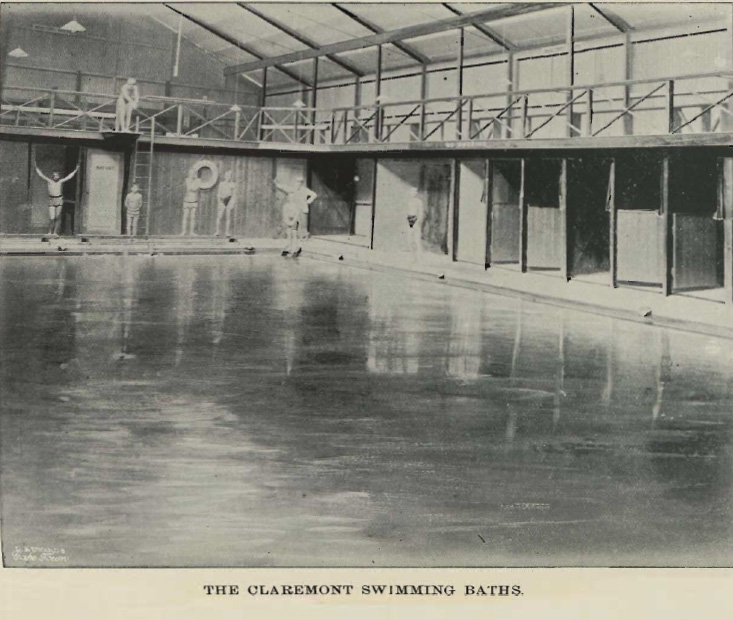
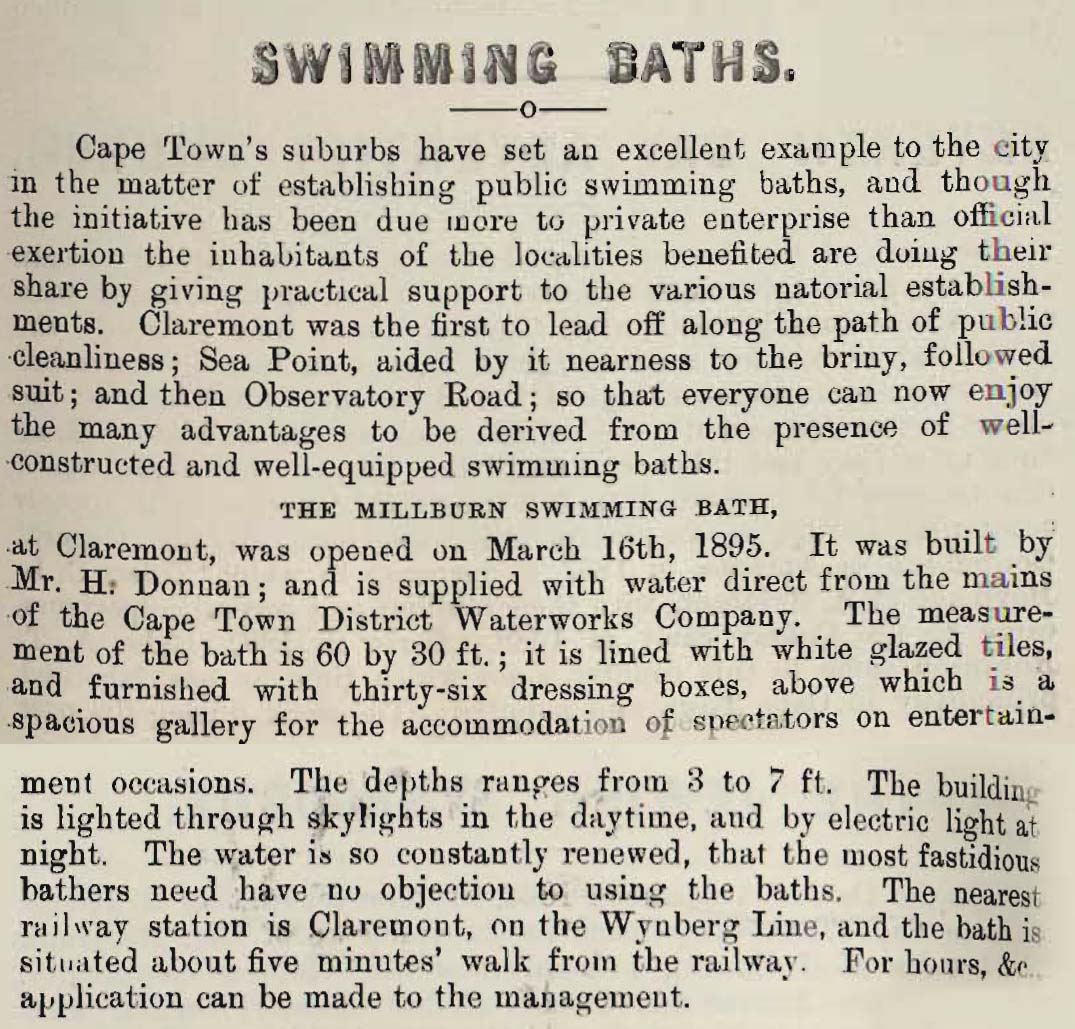
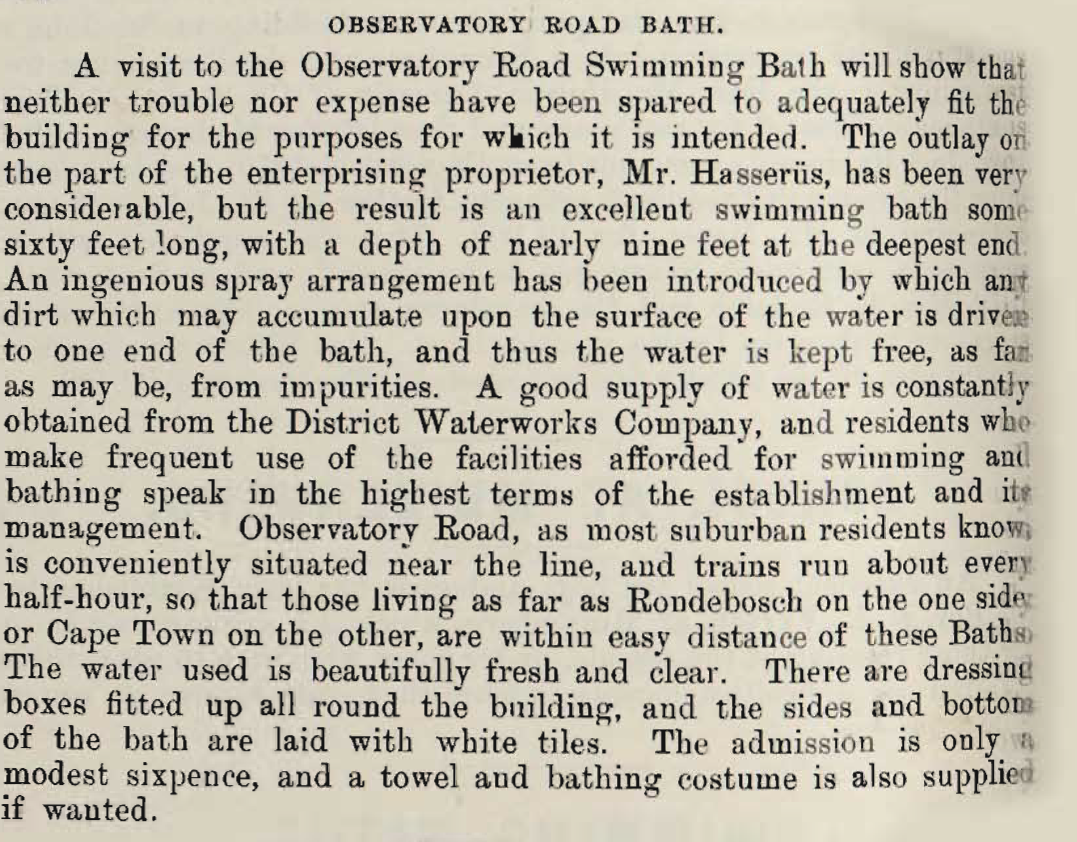
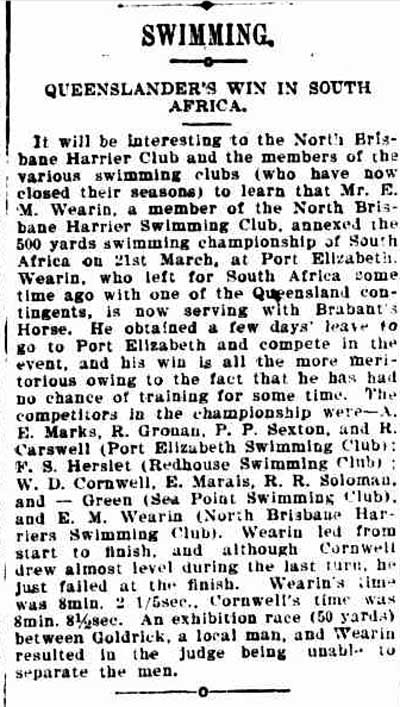
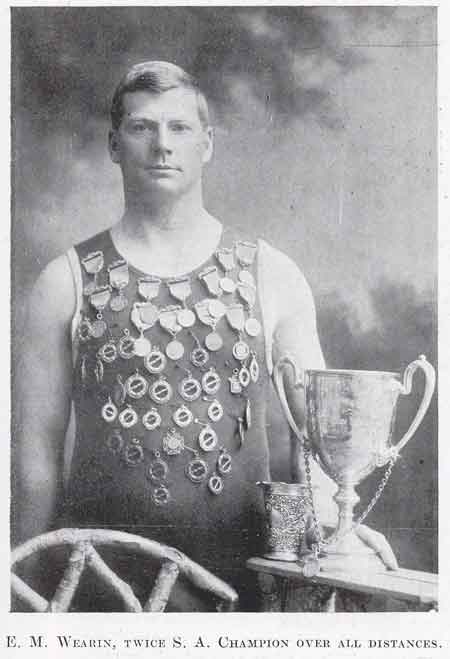
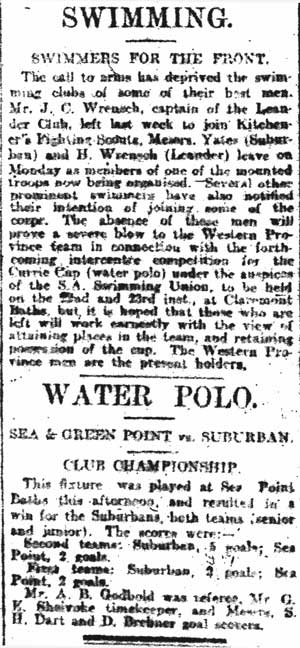


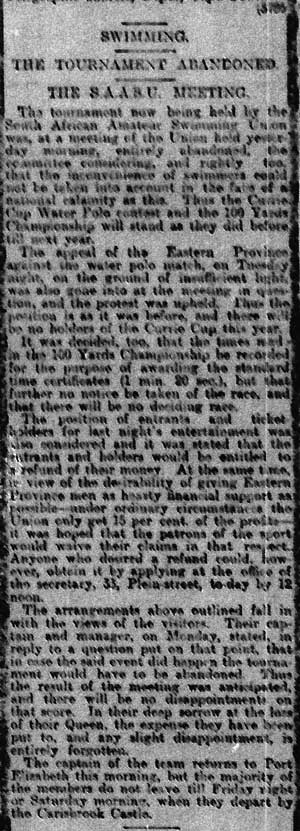
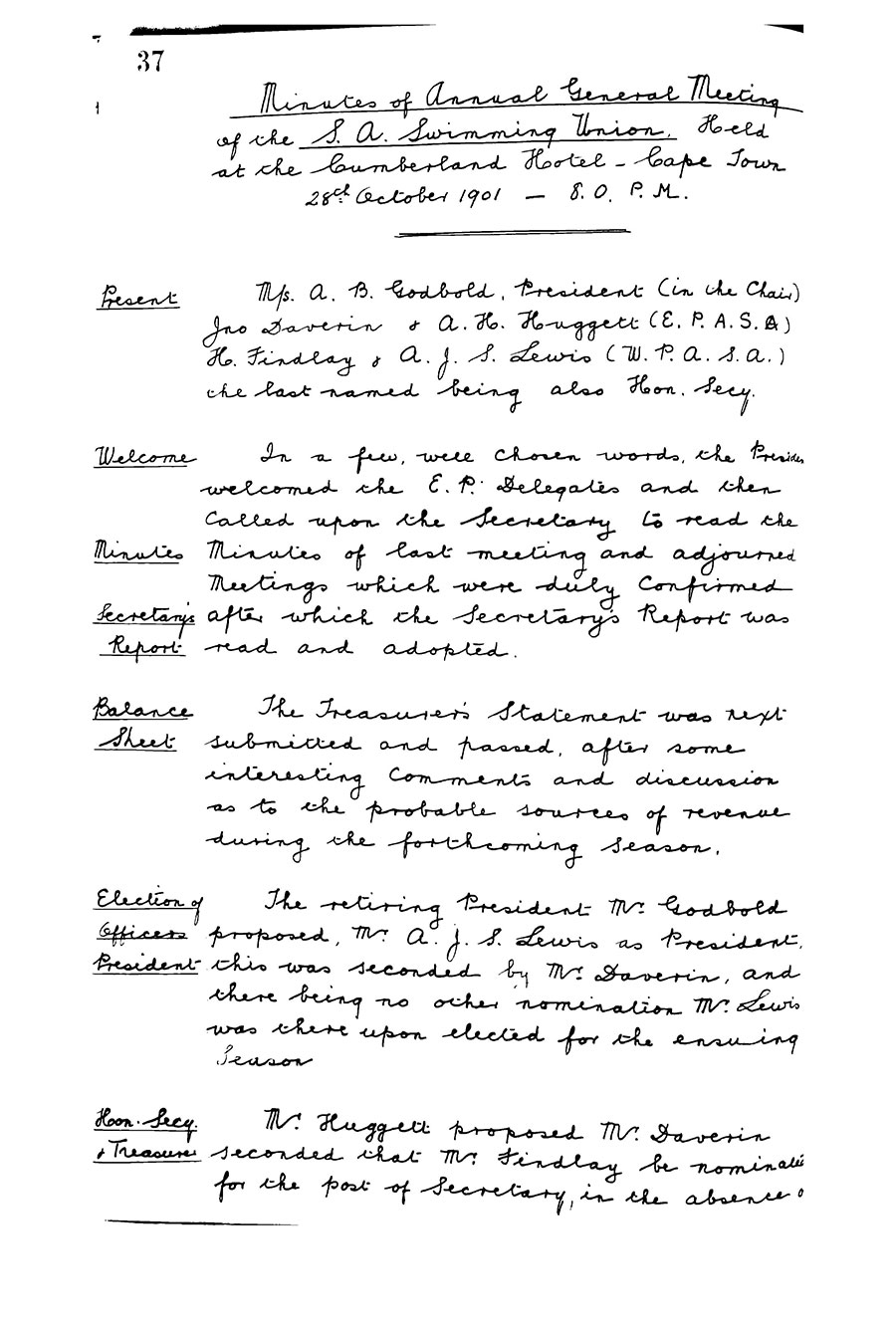
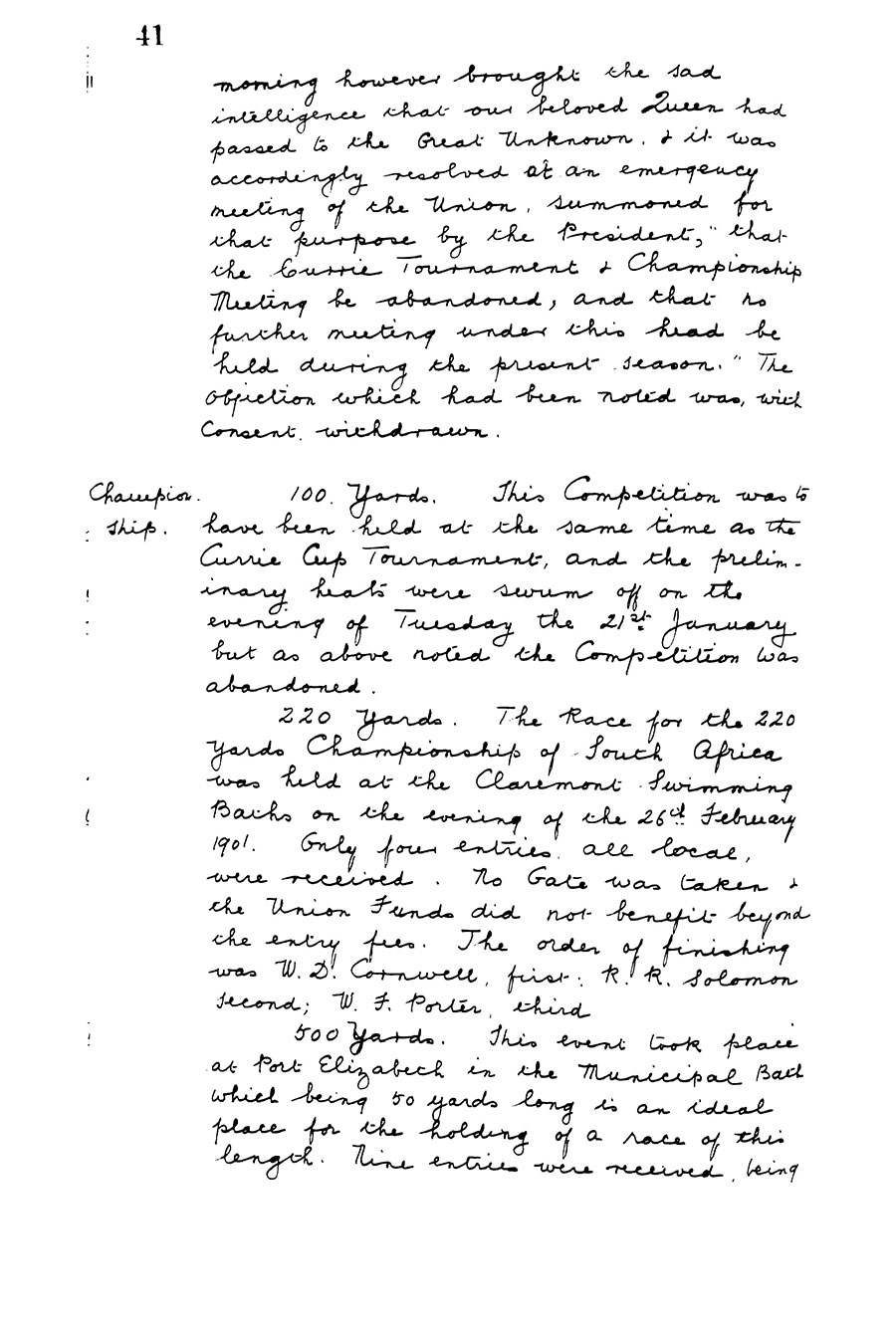
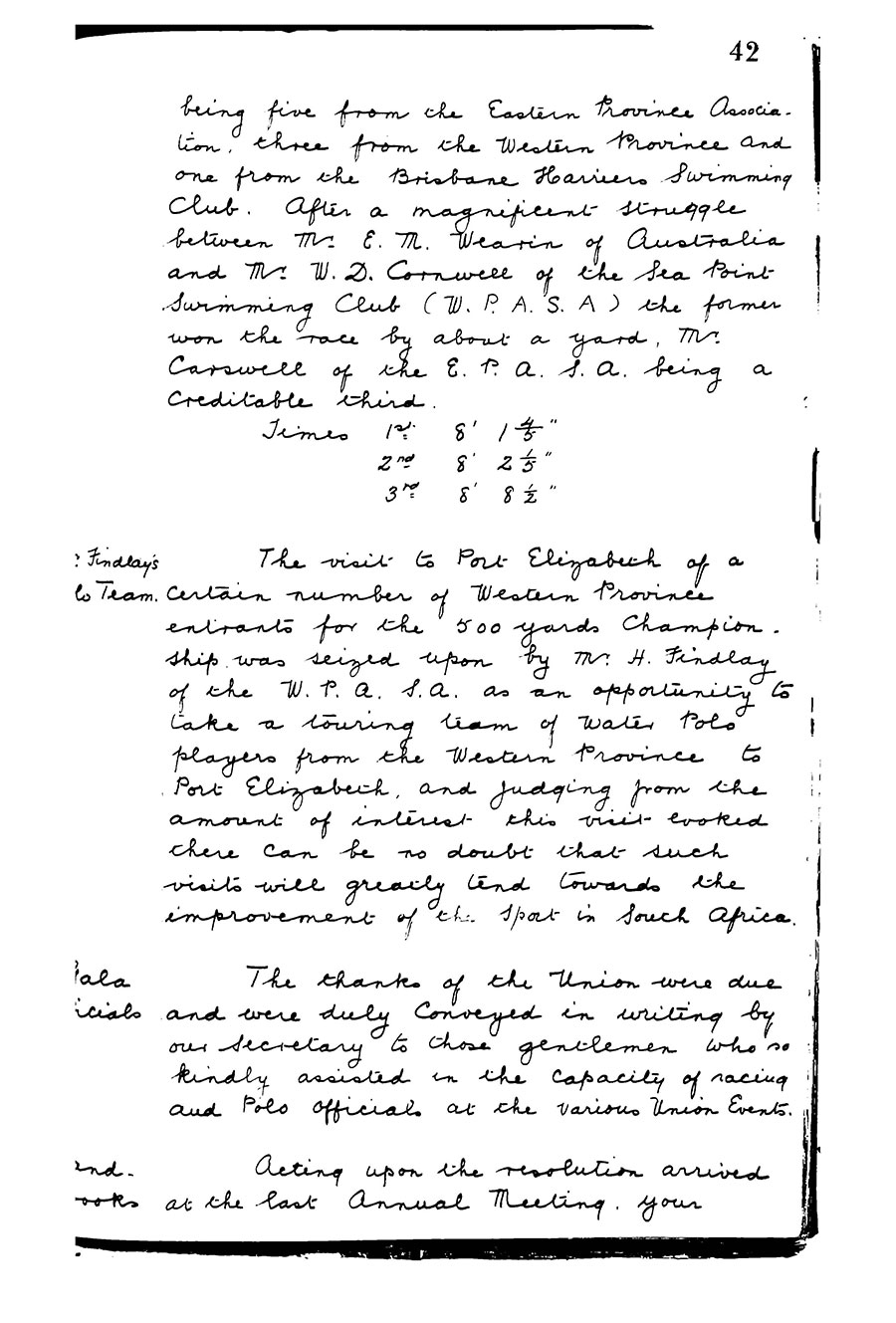
The first national swimming championship of South Africa, held under the auspices of the South African Amateur Swimming Union (SAASU), took place in Port Elizabeth in January 1900. It consisted of a 100-yard race for men. The inaugural Currie Cup inter-provincial water polo tournament was held at the same time.
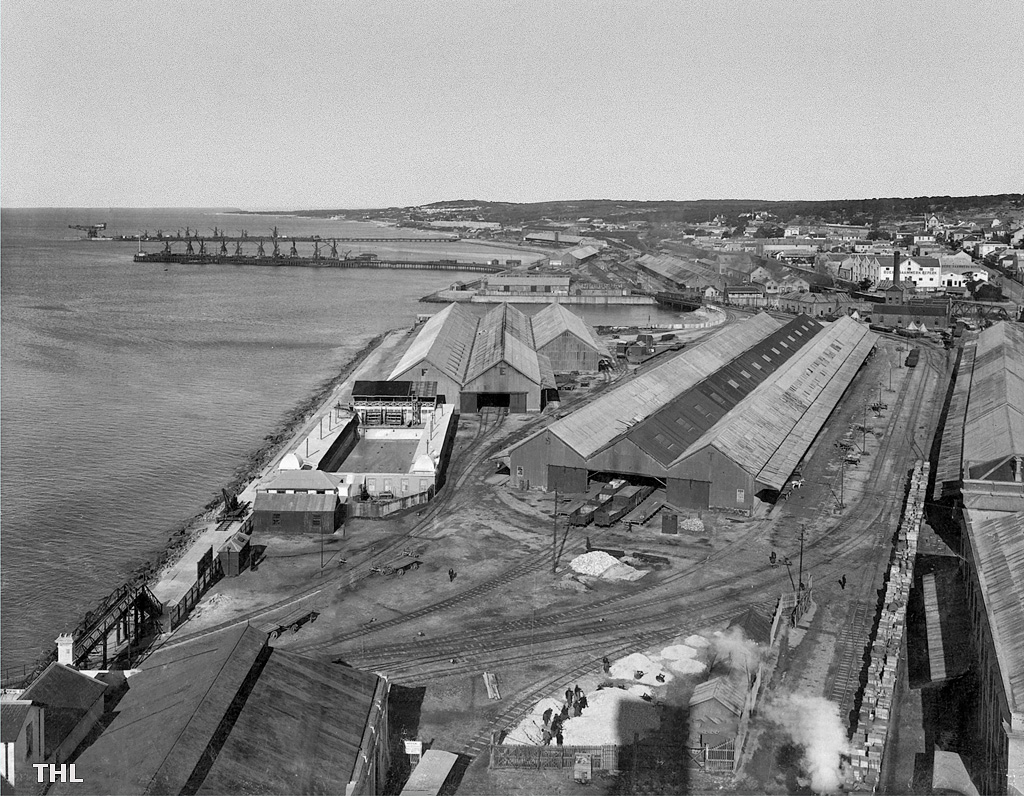
Port Elizabeth’s first seawater swimming bath was built by the PE Municipality on an embankment of reclaimed ground near the elegant Customs House at the entrance to the harbour. The budgeted cost was £4,000. Read more →
Western Province won the water polo tournament and was presented with the Currie Cup by the local representative of Sir Donald Currie's Castle Shipping Line.
The Western Province team consisted of HA Reid (goalie), H Wrench, R Marais, E Marcus, George E Shelvoke, J Wrench and AC Solomon.
The Eastern Province team was W Hahn (goalie), A Pickering, C Liston-Foulis, William Fiddian-Green, C Cunningham, R Carswell and AE Marks.
Rupert Ford Marais of Leander Swimming Club in Cape Town swam for Western Province. He became the first Local Champion of South African swimming when he won the first 100-yard South African Championship race, beating WD Cornwall and JC Wrench of Cape Town. R Richardson of the Eastern Province finished in 4th place.
Read more about Rupert Marais →
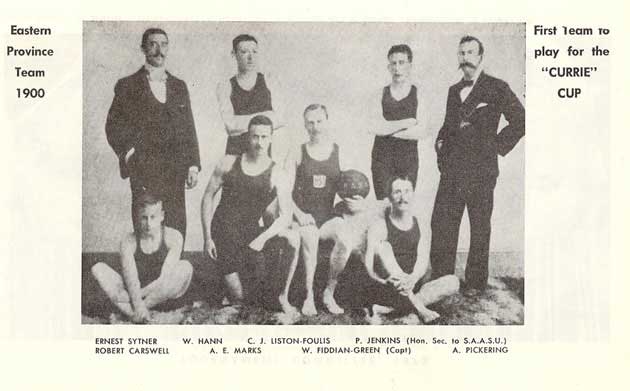
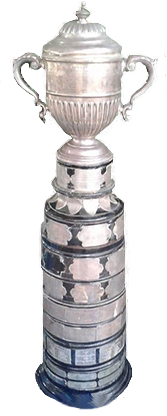
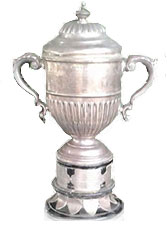
The water polo Currie Cup. As of 2025 - its whereabouts are unknown.
According to the official Minutes of a meeting held at Port Elizabeth on the 20th October 1899, the South African Amateur Swimming Union (SAASU) was established, and William Fiddian-Green was elected president. The first two affiliated provinces were the Eastern Province and the Western Province. SAASU would promote swimming and water polo, stimulate public opinion in favour of providing proper facilities and to hold amateur championships, according to their own Rules, or following the Rules of the British Amateur Swimming Association (ASA), where necessary. The ASA was established in 1869 and had developed a set of Rules for this purpose.
Note: The first national swimming championships were held in Australia in 1846. This initial event was a 440-yard (400-meter) race. Australia then held these championships annually. Some of the other National organising associations that were established include Germany (1882), the USA (1888), the Netherlands (1888), France (1890), New Zealand (1890), Hungary (1896), Australia (1909), and Japan (1924). The international governing body, the Fédération internationale de natation (FINA), was established in July 1908. South Africa joined FINA in 1909.
The Dutch East India Company created a refreshment station for their ships at the Cape of Good Hope in 1652. It was captured (and re-captured in 1806) by British forces during the Napoleonic Wars in 1795. British influence grew significantly after 1806 when the region officially became a British Colony. This was marked by the introduction of the English language and culture, as well as attempts to reform the colony's social and political structure. The Eastern Cape region developed rapidly after the arrival of 4500 settlers from Britain in 1820. Port Elizabeth, Uitenhage, East London, Grahamstown, King Williamstown and other towns all built British-style schools for their children, many of which still exist in some form in 2025.
The British administration gradually established institutions like schools, prisons, hospitals, and museums, reflecting the colonial mindset of "civilisation, progress, and modernity". By 1899, various social and sports clubs existed in the colony.
In Cape Town, the swimming clubs included the Leander SC, Peninsula AFC (many clubs were styled as football (rugby) clubs, with a swimming section) and the City and Suburban Swimming Clubs. The extant Port Elizabeth Amateur Swimming Club officially dates from 1898. At Durban, the main centre in the British colony of Natal, the Queens Park Swimming Club was established in 1896, even though the Natal Amateur Swimming Association would only affiliate with SAASU in 1905. Swimming clubs also existed in the Transvaal and Orange Free State Republics, but they were currently at war with the British Empire, which sought to annexe those countries to acquire their mineral wealth.
A notable presence at the Cape was one "Professor" Doyle, who was the manager at the Observatory indoor swimming pool. He gave swimming lessons and demonstrated many techniques at public exhibitions. Read more about swimming professors →
The Second Boer War began on October 11, 1899, when the Transvaal and the Orange Free State declared war on the British Empire. Half a million soldiers from Britain and its Empire arrived at the ports of the Cape and Natal colonies, where they soon began to impact local events. The names of the participants at the first aquatic championships were almost exclusively English, aside from the winner of the swimming race, R. Marais, a descendant of Charles Marais, a French Huguenot who arrived at the Cape in 1688.


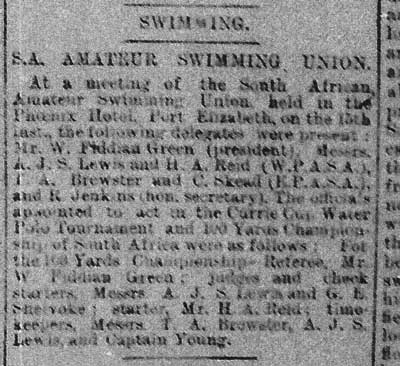
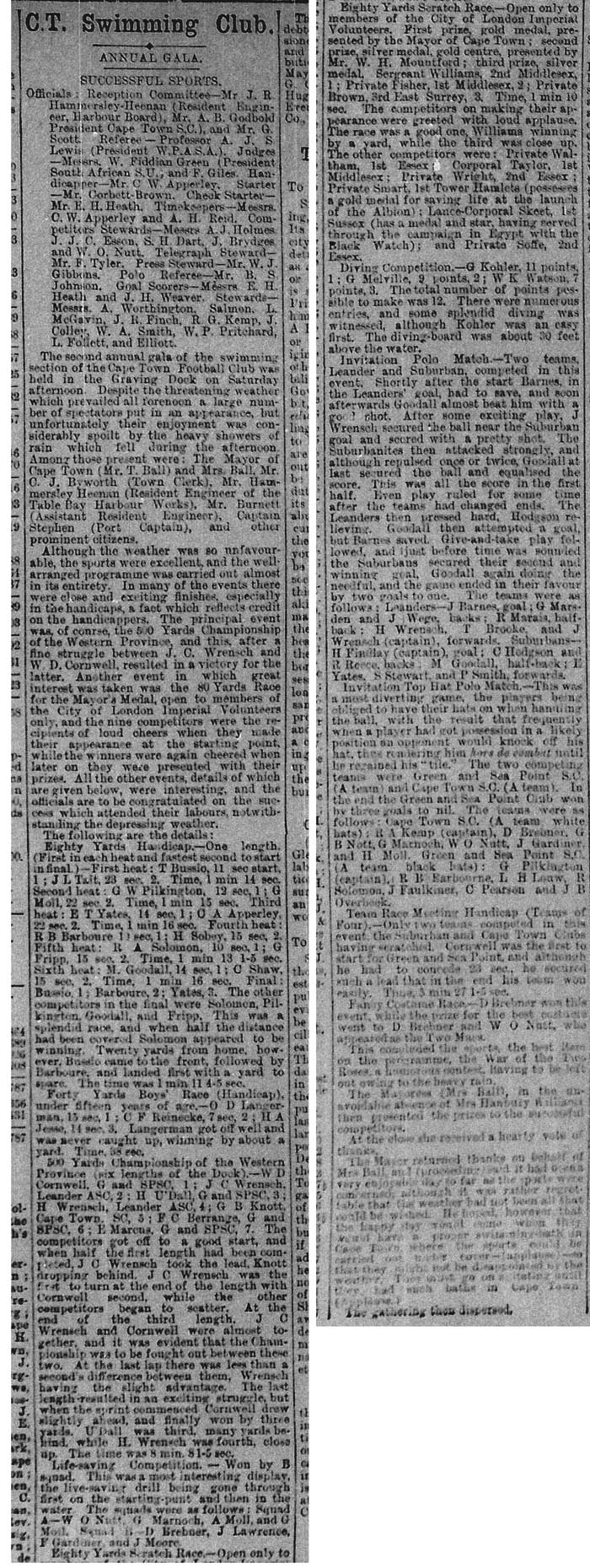
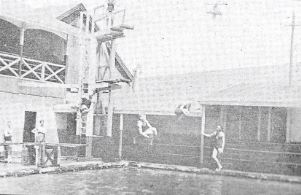

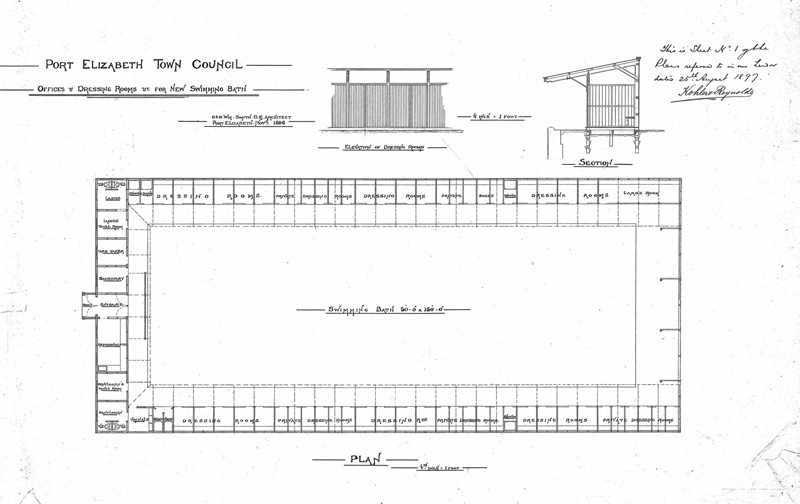
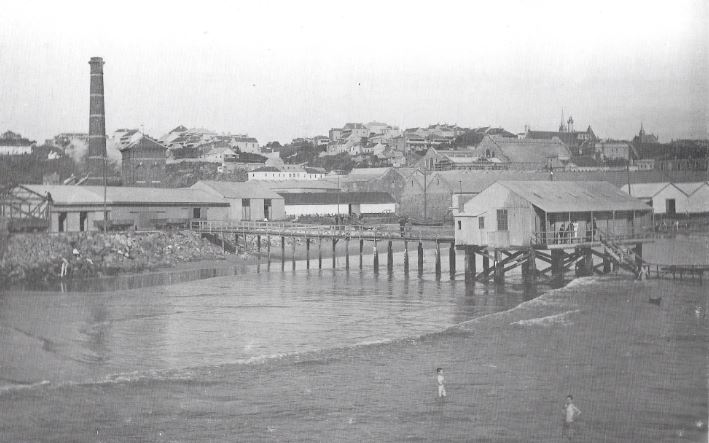
Before the breakwater swimming pool was constructed, swimmers used the bathhouse in the Baakens River.
There is no official database of results from the annual national swimming championships in South Africa. The information provided here has been gleaned from visiting libraries and reading old newspapers.
In January 1900, the first South African inter-provincial national aquatic sports championships were organised by the South African Amateur Swimming Union (SAASU) in Port Elizabeth, where a 50-yard long saltwater-filled swimming pool had been constructed on the harbour breakwater. The only affiliated bodies then were the Western Province ASA and the Eastern Province ASA.
Aquatic carnivals, water polo matches and swimming galas were regularly held at schools and clubs during the hot summer months in the Cape Colony. Swimming pools were built by municipalities and schools, with sports clubs also a common feature of English society in the Cape and the Eastern Cape. In Cape Town, aquatic carnivals were also hosted at the dry dock in the harbour.
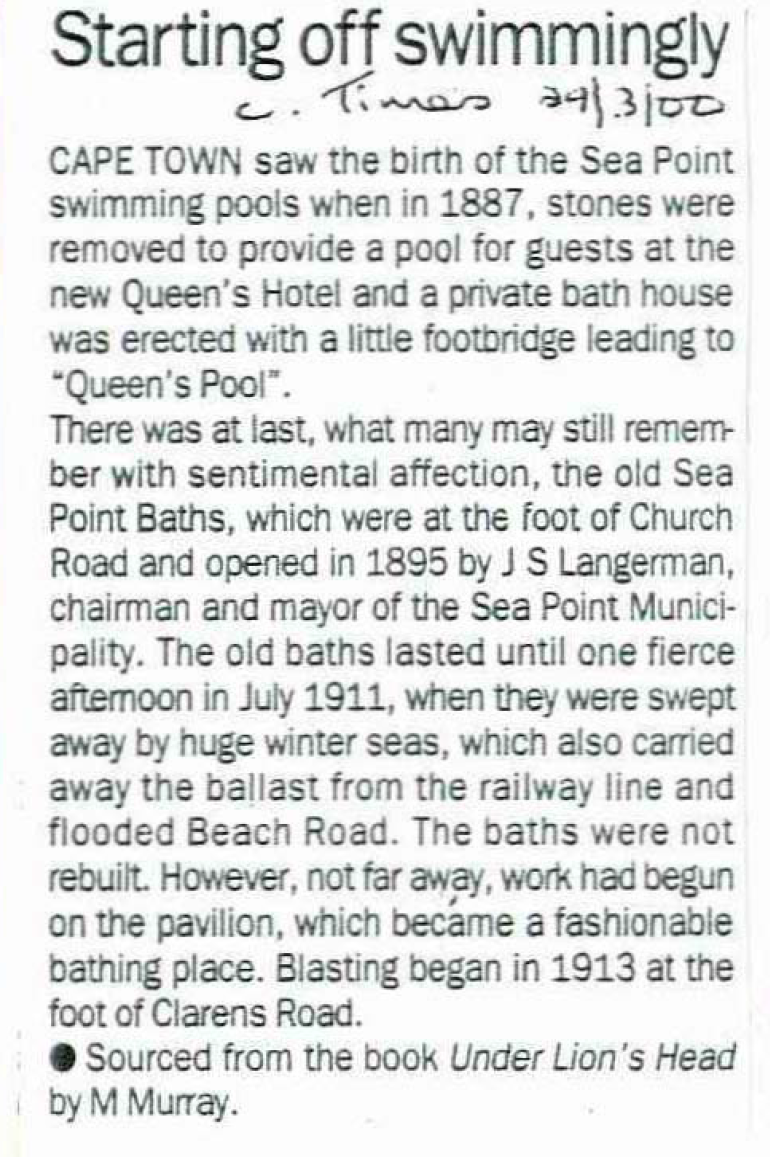
The event featured a 100-yard Championship swimming race and water polo matches between the two competing provinces - Eastern Province and Western Province. Sir Donald Currie donated a trophy for the water polo tournament.
The programme was common to English-style 19th-century aquatic carnivals, combining water polo, a championship race (for men) with filler events like lifesaving, diving and ornamental (synchronised or artistic) swimming exhibitions. In addition, there were non-Championship handicapped and scratch swimming races for the men, as well as races for Ladies and Junior Boys. Other events were added over time, and in 1922, a 100-yard Championship event for Ladies was added to the programme.
As new provinces joined the SAASU, the annual national Championships were rotated to different main centres in each province with a suitable venue, and alternated between an inland and coastal city. After 1994, this arrangement was scrapped.
| 1900 | Port Elizabeth |
| 1901 | Cape Town |
| 1902 | Port Elizabeth |
| 1903 | no event |
| 1904 | Cape Town |
| 1905 | Port Elizabeth |
| 1906 | Pretoria |
| 1907 | Durban |
| 1908 | Port Elizabeth |
| 1909 | Cape Town |
| 1910 | Johannesburg |
| 1911 | Durban |
| 1912 | Port Elizabeth |
| 1913 | to be located |
| 1914 | Johannesburg |
| 1915 | no event |
| 1916 | no event |
| 1917 | no event |
| 1918 | no event |
| 1919 | no event |
| 1920 | Durban |
| 1921 | Port Elizabeth |
| 1922 | Salisbury |
| 1923 | Cape Town |
| 1924 | Johannesburg |
| 1925 | Durban |
| 1926 | Port Elizabeth |
| 1927 | East London |
| 1928 | Johannesburg |
| 1929 | Salisbury |
| 1930 | Bloemfontein |
| 1931 | Cape Town |
| 1932 | Kimberley |
| 1933 | Durban |
| 1934 | Pretoria |
| 1935 | Port Elizabeth |
| 1936 | Bulawayo |
| 1937 | Johannesburg |
| 1938 | East London |
| 1939 | Bloemfontein |
| 1940 | Cape Town |
| 1941 | Pretoria |
| 1942 | Durban |
| 1943 | no event |
| 1944 | no event |
| 1945 | no event |
| 1946 | Pretoria |
| 1947 | Port Elizabeth |
| 1948 | Salisbury |
| 1949 | Pietermaritzburg |
| 1950 | Kimberley |
| 1951 | Johannesburg |
| 1952 | Cape Town |
| 1953 | Johannesburg |
| 1954 | Port Elizabeth |
| 1955 | Pretoria |
| 1956 | Durban |
| 1957 | Bulawayo |
| 1958 | East London |
| 1959 | Johannesburg |
| 1960 | Cape Town |
| 1961 | Kimberley |
| 1962 | Cape Town |
| 1963 | Pretoria |
| 1964 | Port Elizabeth |
| 1965 | Salisbury |
| 1966 | Durban |
| 1967 | Johannesburg |
| 1968 | Bloemfontein |
| 1969 | Cape Town |
| 1970 | Pretoria |
| 1971 | Cape Town |
| 1972 | Port Elizabeth |
| 1973 | Bulawayo |
| 1974 | Bloemfontein |
| 1975 | Johannesburg |
| 1976 | Durban |
| 1977 | Cape Town |
| 1978 | Johannesburg |
| 1979 | Port Elizabeth |
| 2000 | |
| 2001 | |
| 2002 | |
| 2003 | |
| 2004 | |
| 2005 | |
| 2006 | |
| 2007 | |
| 2008 | |
| 2009 | |
| 2010 | |
| 2011 | |
| 2012 | |
| 2013 | |
| 2014 | |
| 2015 | |
| 2016 | |
| 2017 | |
| 2018 | |
| 2019 |
| 1980 | Cape Town |
| 1981 | Port Elizabeth |
| 1982 | Pretoria |
| 1983 | Bloemfontein |
| 1984 | Cape Town |
| 1985 | Bloemfontein |
| 1986 | Johannesburg |
| 1987 | Cape Town |
| 1988 | Pretoria |
| 1989 | Durban |
| 1990 | Johannesburg |
| 1991 | Cape Town |
| 1992 | Durban |
| 1993 | Germiston |
| 1994 | Durban |
| 1995 | Durban |
| 1996 | Durban |
| 1997 | Germiston |
| 1998 | Durban |
| 1999 | Durban |
| 2020 | |
| 2021 | |
| 2022 | |
| 2023 | |
| 2024 | |
| 2025 | Port Elizabeth |